PROXIMANOVA-LIGHT.OTF PROXIMANOVA-LIGHTIT.OTF PROXIMANOVA-EXTRABLD.OTF PROXIMANOVA-BOLD.OTFPROXIMANOVA-BLACK.OTF
Get this font in here!
This Article Applies to:
- Avast Small Business Solutions
- Avast Small Office Protection
- Avast Business Antivirus
- Avast Business Antivirus Pro
- Avast Business Antivirus Pro Plus
- Avast Business CloudCare Antivirus
Sandbox is a virtualization tool in Avast Business Antivirus that allows you to browse the web or run applications in a virtual, safe environment that is completely isolated from the rest of your PC's system. This feature is useful when you want to run suspicious or untrusted applications without risk.
When you run an application in Sandbox, all necessary files are always copied to Sandbox storage where they can be modified as needed without affecting the original files. Any new files created during virtualization are also saved to Sandbox storage. Sandbox storage is a file space completely isolated from the rest of your system and other Sandboxes. By default, Sandbox storage is created in the same drive as the original file.
Sandbox is not available for macOS devices.
Running Apps in Sandbox
To run an app in Sandbox:
- Go to the Privacy section of the client UI, then select Sandbox
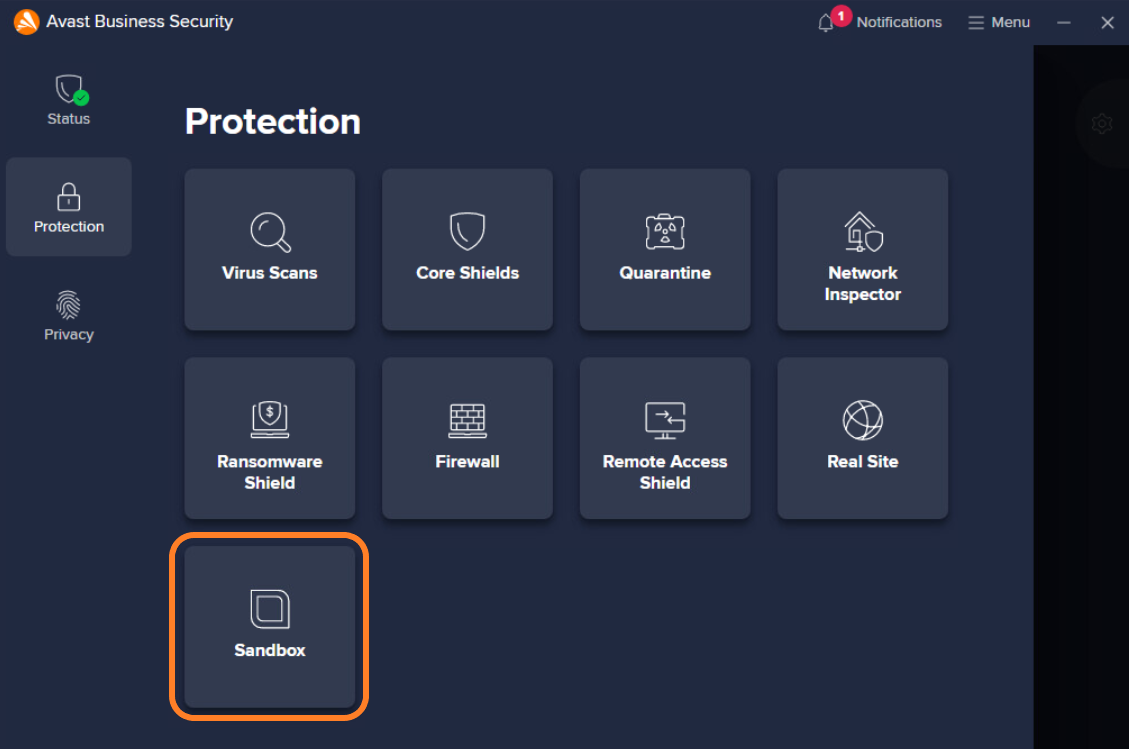
- Click Run App in Sandbox
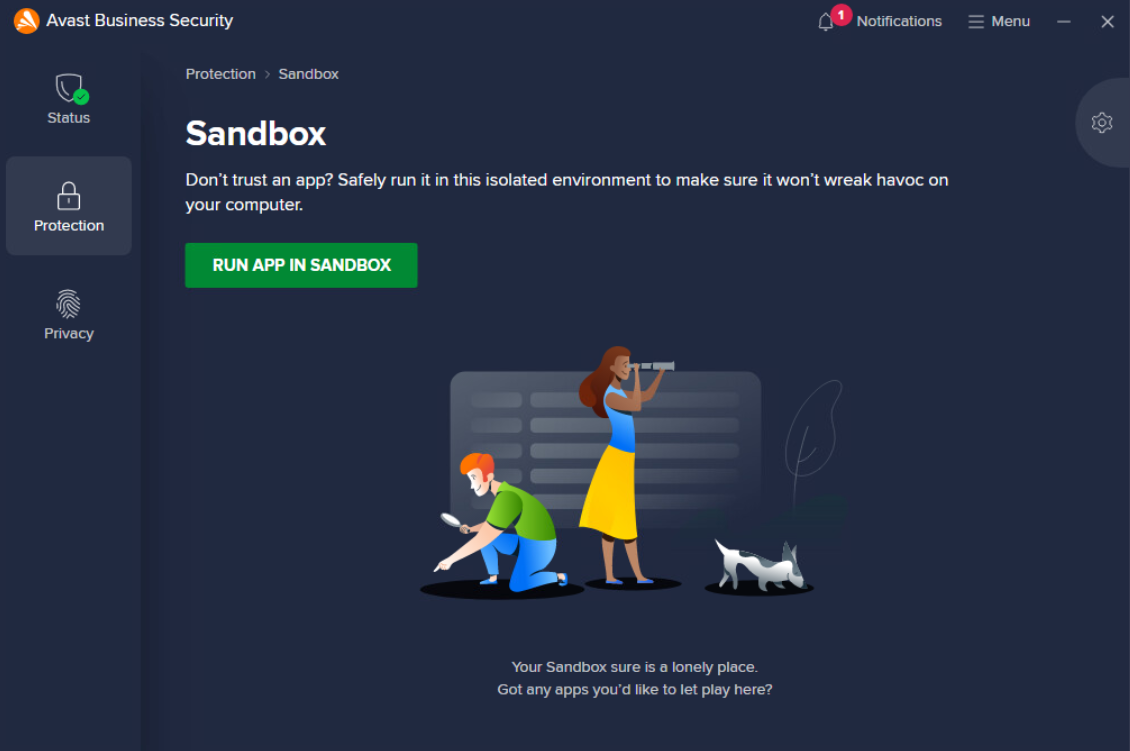
- Within File Explorer that opens, locate and double-click the desired app
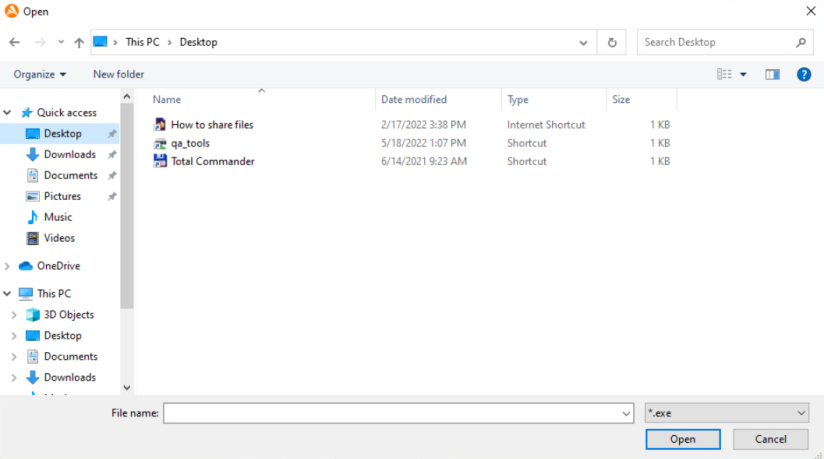
The app will open with the Avast Sandbox tag around it, and it will be visible in the UI, from where it can also be closed.
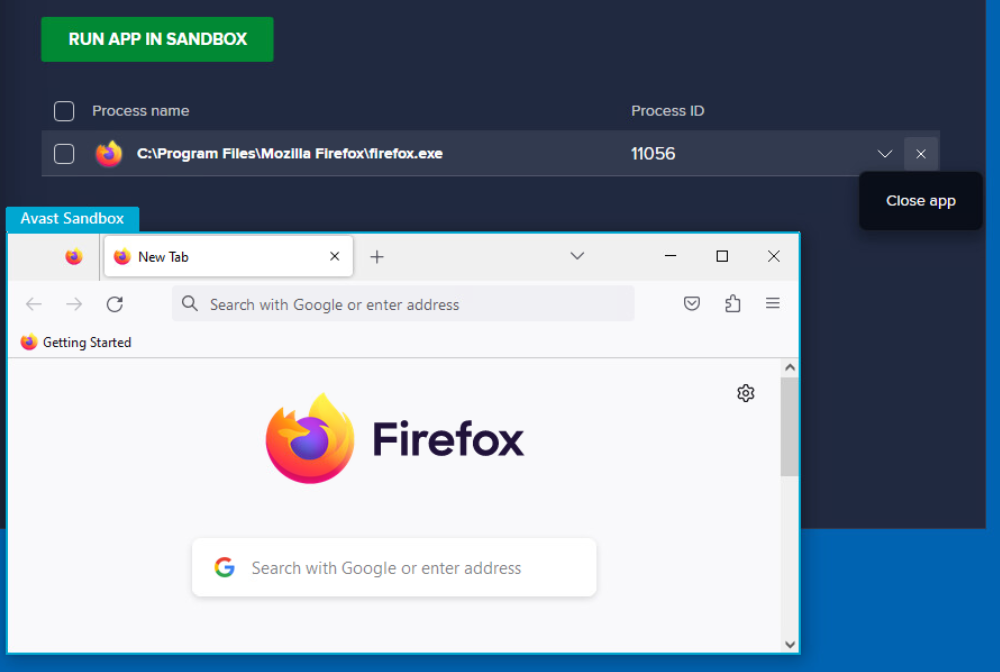
Alternatively, you can run the app in Sandbox directly from your desktop or File Explorer via the Run this program in sandbox/Always run in sandbox option in the Windows context menu (i.e. the menu that appears when right-clicking the app).
You can enable/disable this option via the advanced Sandbox settings (see Configuring Sandbox Settings).
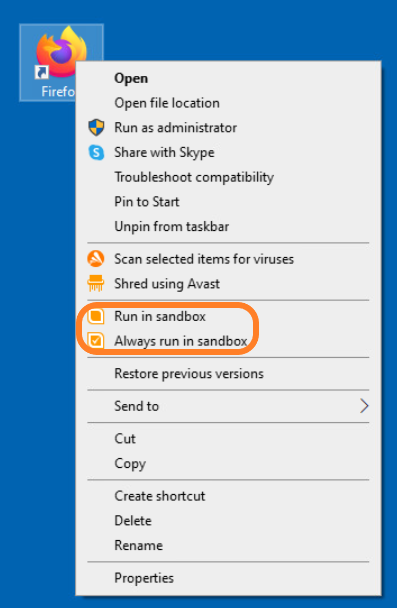
If multiple processes are running in Sandbox, they will be shown when expanding the app detail.
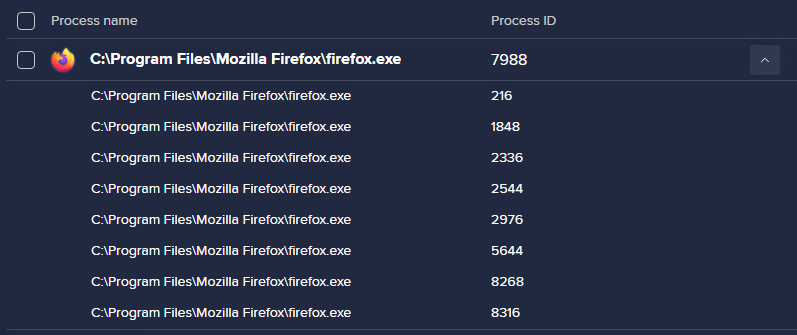
Configuring Sandbox Settings
Advanced Sandbox settings can be accessed by either clicking the gear icon on the Sandbox screen or navigating to Menu > Settings > Protection > Sandbox.
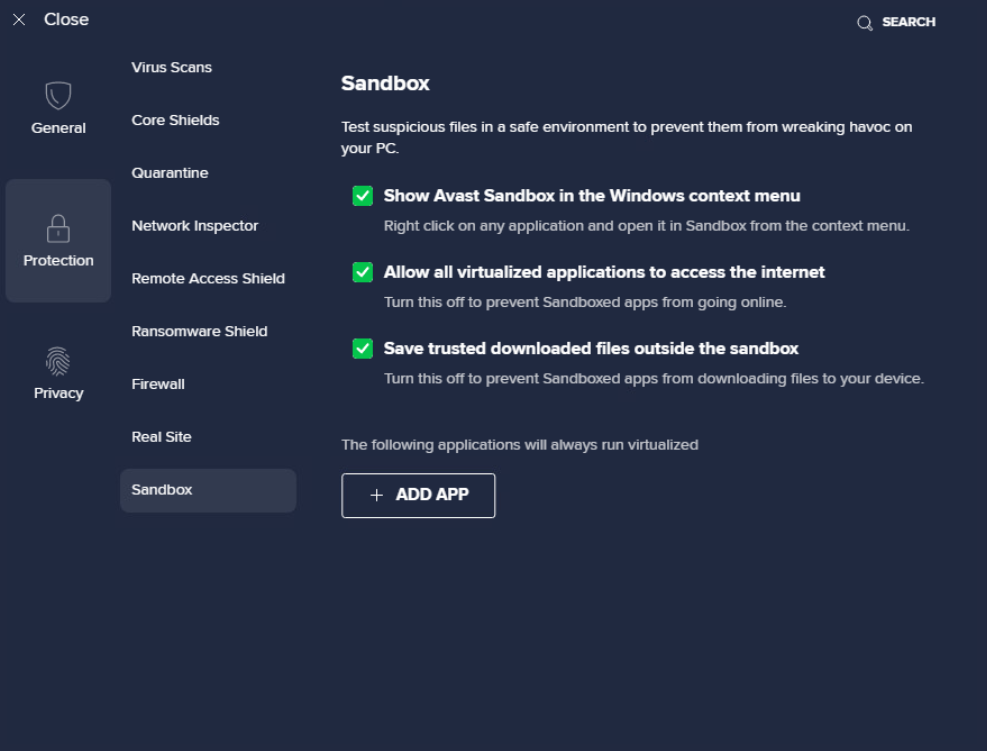
- Show Avast Sandbox in the Windows context menu: Enables the Run this program in sandbox and Always run in sandbox options in the Windows context menu when right-clicking apps (see Running Apps in Sandbox).
- Allow all virtualized applications to access the internet: Disabling this option will prevent sandboxed apps from accessing the internet (e.g. browser apps will not be able to access the internet).
- Save trusted downloaded files outside the sandbox: Lets you save any files downloaded while browsing the web inside the virtualized window to locations on your device that are not virtualized. This only applies to download processes which are identified as safe. If you untick this box, downloaded files will be deleted when you close the sandboxed browser.
Via the + ADD APP button at the bottom of the screen, you can permanently sandbox apps by selecting them either from the active processes or manually.
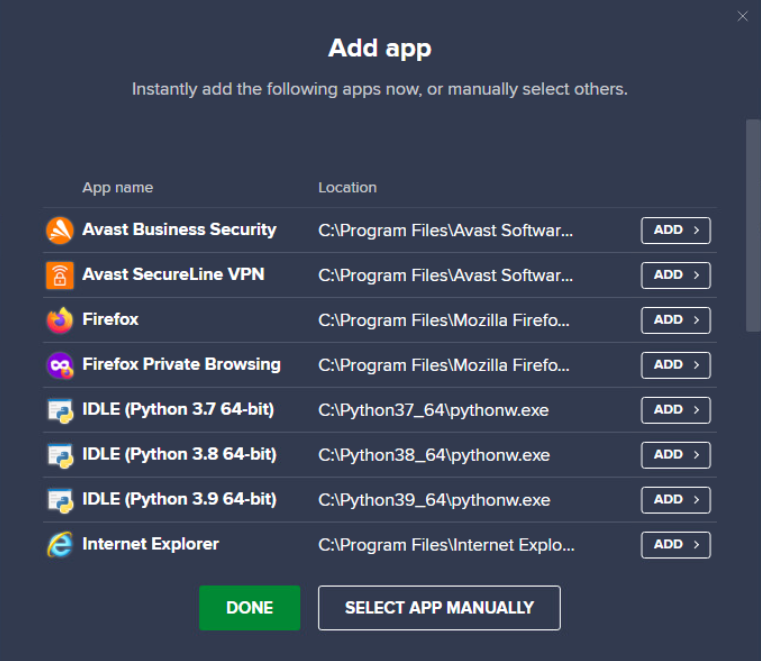
You can revert this anytime via the trash bin icon, which appears when hovering over a listed app.

Additional Geek Area Settings
Within the Geek Area, there are several further settings for Sandbox. To access these:
- Go to Menu, then select Settings
- Click Search in the top right corner
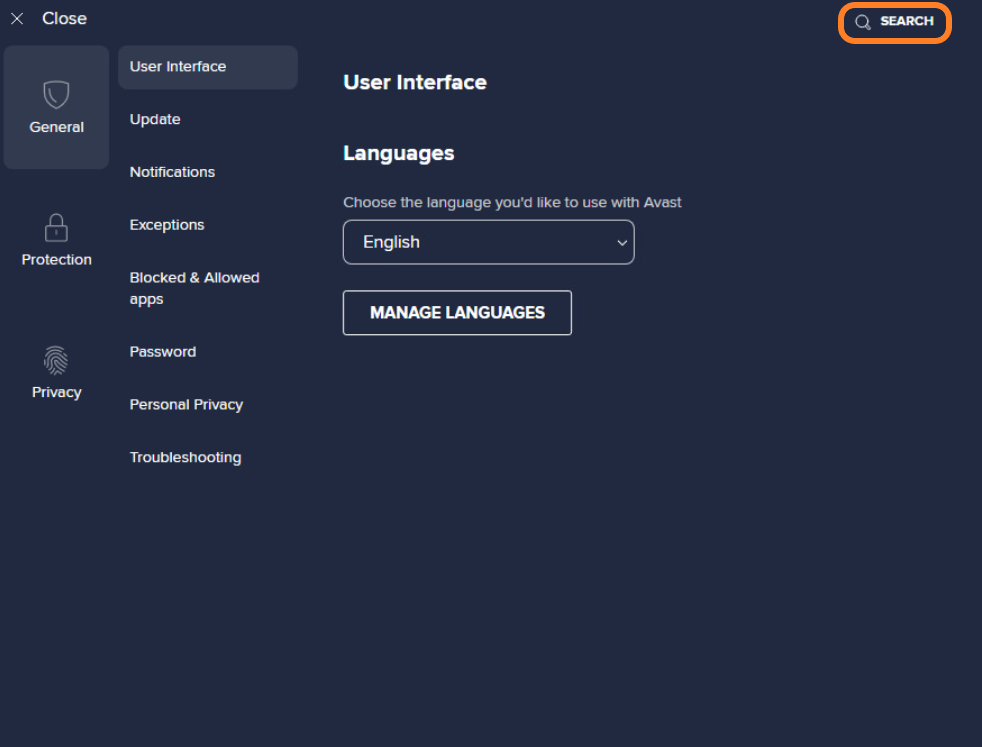
- Type geek:area in the search field, then hit Enter

- Scroll down to the Sandbox section
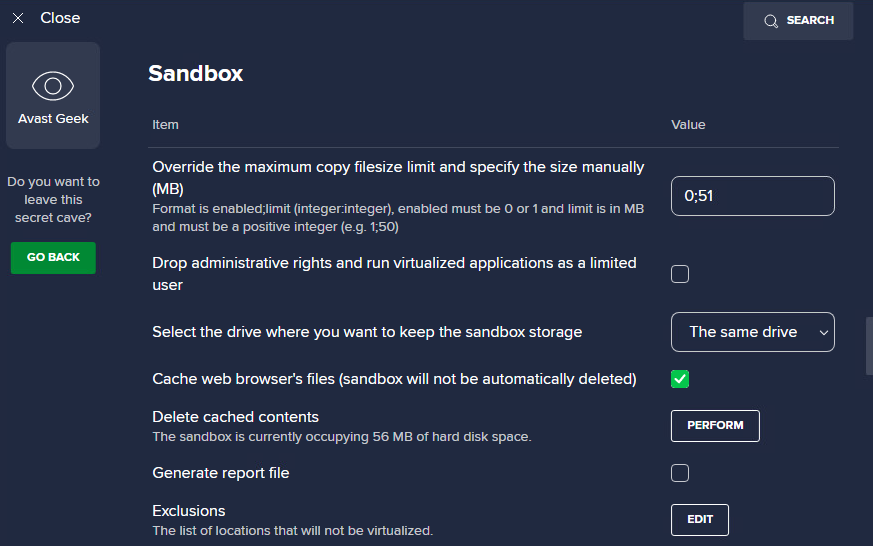
Here, you can enable/disable the following options by ticking/unticking the checkboxes next to them:
- Override the maximum copy filesize limit and specify the size manually (MB): Allows you to specify the size of files that applications can duplicate for further modifications while running in Sandbox. If a sandboxed application rejects a file, change the default 51 MB limit.
- Drop administrative rights and run virtualized applications as a limited user: Removes administrative rights for applications run in Sandbox to prevent applications from accessing restricted system components.
- Select the drive where you want to keep the sandbox storage: Lets you choose your preferred drive.
- Cache web browser's files (sandbox will not be automatically deleted): Saves only virtualized files for web browsers, which improves the browser's performance in Sandbox. This option is enabled by default.
- Delete cached contents: Immediately removes cached contents from Sandbox when you click Perform.
- Generate report file: Ensures that reports of virtualized applications are automatically created. When troubleshooting issues with Avast Support, you may be requested to provide a report file.
- Exclusions: Lets you create a list of locations that you do not want to be virtualized.
FAQ
 Why would I run apps in Sandbox?
Why would I run apps in Sandbox?
It is useful to run suspicious or untrusted applications in Sandbox to avoid the risk of compromising your network.
 Can I disable Sandbox?
Can I disable Sandbox?
The feature can be removed from the Antivirus installation.
 Can I run all my apps in Sandbox?
Can I run all my apps in Sandbox?
This is not what Sandbox is intended for, it will likely encounter issues running multiple apps at once for long periods.
Other Articles In This Section:
Security Browser Extension (Avast Online Security & Privacy)
Services Available via Business Hub Only
Related Articles: